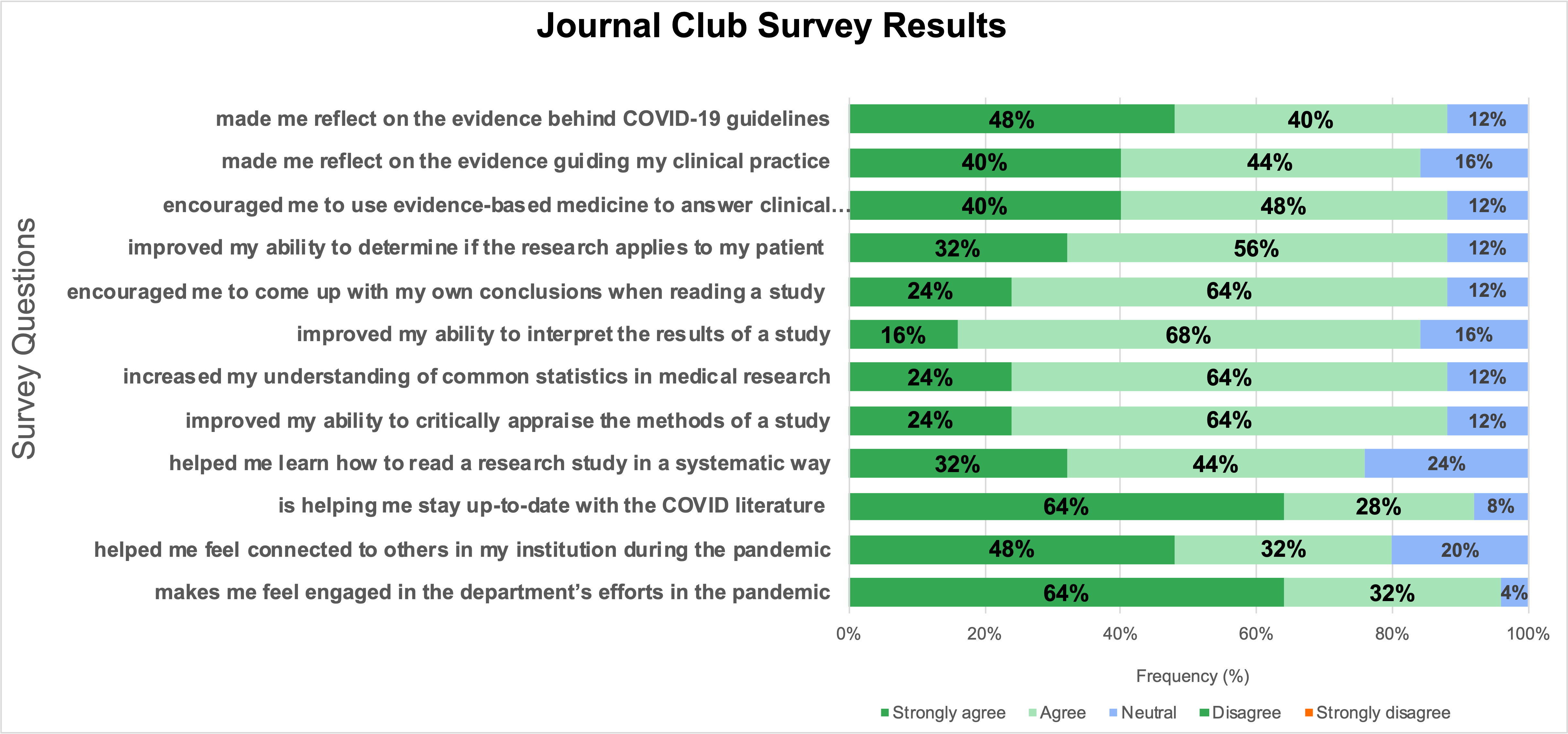Background: In the early stages of the COVID-19 pandemic, there was a lack of knowledge about this new disease. Keeping up to date with new, rapidly expanding literature was demanding. Evidence-Based Medicine (EBM) practices were ambiguous and critical evaluation of scientific articles was challenging. Management of patients with COVID-19 was often isolating for providers and anxiety-provoking due to risks of contracting the disease. For residents, formal educational activities were on hold, which for some led to a decreased sense of community.
Purpose: We created a virtual COVID-19 journal club (JC) to critically evaluate new, key COVID-19 articles. There were 4 educational objectives: 1. Increase the application of EBM to clinical practice and clinical reasoning; 2. Improve critical appraisal of the medical literature; 3. Broaden knowledge of COVID-19 literature; 4. Create greater resident and faculty empowerment and inter- and intra-departmental collaboration in the face of the COVID-19 pandemic.
Description: The COVID-19 journal club extended over roughly 3 months (March – June 2020) during the first peak of the pandemic in Philadelphia. There were 5 faculty advisors, a resident guiding coalition, and volunteer residents & faculty across various specialties. All residents and faculty were eligible to participate on a voluntary basis, with roughly 20-30 people in attendance per JC. Sessions occurred twice weekly via video conference, with 2 articles presented per JC. Volunteer resident or faculty presented an article using a template PowerPoint, guide to formulating PICO questions, and critical appraisal checklists and guidelines. Discussions were structured around the following questions: How is this research being discussed in the news? How does this change clinical practice? How does this change COVID-19 institutional policy? What are the costs of this intervention? What will you tell patients? Summary of key article findings were written in a “COVID-19 Evidence-Based-Medicine Clinical Guide” that was available for use by Hospital Medicine faculty and Internal Medicine residents.Participants completed an anonymous survey near the end of the project to assess the educational aims of the journal club. The survey included demographic information and questions assessing our four educational objectives with answers reported with Likert scales. Twenty-five participants completed the survey. In regards to our EBM aims, 88% reported improved ability to apply research to clinical practice, and 88% felt encouraged to use EBM to answer clinical questions. For critical appraisal, 86% reported improved ability to critically appraise study methods, and 84% reported improved ability to interpret the results of a study. For COVID-19 knowledge, 92% stated that JC helped them stay up-to-date with the COVID-19 literature. Lastly, JC made 96% feel engaged in pandemic preparation efforts, and 80% said JC helped them feel connected to others.
Conclusions: COVID-19 virtual journal club launched during the pandemic served as an effective, innovative educational modality. The journal club offered a safe, physically distanced space for resident education, while increasing a sense of community. The COVID-19 journal club was the impetus for resident and faculty collaboration and empowerment between multiple departments, a space for collective learning on COVID-19 literature, critical appraisal of literature, and real-time incorporation of evidence-based medicine to clinical practice.

